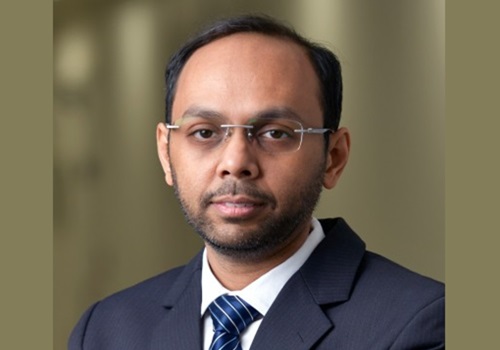Quote on India`s 2023-24 Foodgrain Output: Record Highs Amid Minor Dips by Amit Gupta, Kedia Advisory

Below the Quote on India`s 2023-24 Foodgrain Output: Record Highs Amid Minor Dips by Amit Gupta, Kedia Advisory
India's foodgrain production for 2023-24 is estimated at 328.85 million tonnes, slightly down from last year's 329.69 million tonnes. Record outputs in wheat and rice are offset by a 6% decline in pulses and maize production. Oilseeds and cotton also saw decreased yields, while sugarcane and jute production dropped. The government targets a substantial increase to 340.40 million tonnes for the 2024-25 crop year.
Highlights
Foodgrain Production Overview: India's foodgrain production for the crop year 2023-24 is estimated at 328.85 million tonnes, slightly down from the previous year's 329.69 million tonnes. Despite record outputs in rice and wheat, a 6% drop in pulses and maize production contributed to the overall decline. The Agriculture Ministry's third advance estimate highlights these figures.
Record Wheat and Rice Output: Wheat production is projected to hit a record 112.92 million tonnes, surpassing the previous estimate of 112.02 million tonnes due to high yields in Punjab, Haryana, and western Uttar Pradesh. Rice production is also expected to increase, reaching 136.7 million tonnes, up from 135.76 million tonnes last year.
Pulses Production Decline: Pulses production is estimated to have dropped by 6% to 24.47 million tonnes from 26.06 million tonnes in the previous year. This decline is attributed to poor monsoon conditions in key states like Maharashtra and Karnataka. However, tur and lentil outputs have increased, while urad and moong production have significantly decreased.
Oilseeds and Cotton Production: Overall oilseed production is down by 4% to 39.59 million tonnes from 41.36 million tonnes last year. Soybean production fell to 13.05 million tonnes from 14.99 million tonnes, whereas rapeseed and mustard production increased to 13.16 million tonnes from 12.64 million tonnes. Cotton output is also down, estimated at 32.52 million bales from 33.66 million bales.
Sugarcane and Jute Output: Sugarcane production is projected to decrease to 442.52 million tonnes from 490.53 million tonnes last year. Jute and mesta production is slightly down to 9.26 million bales from 9.39 million bales. These declines contribute to the overall decrease in total foodgrain output despite the increases in wheat and rice production.
Future Production Targets: For the 2024-25 crop year, the government aims to achieve a foodgrain production target of 340.40 million tonnes. This includes targets for kharif (159.97 million tonnes), rabi (164 million tonnes), and zaid (16.43 million tonnes) seasons. The ambitious goals reflect the government's efforts to boost agricultural productivity.
Rice and Wheat Targets: The government has set specific targets for major crops: 136.30 million tonnes for rice and 115 million tonnes for wheat. These targets are slightly higher than the current year's projections, indicating a continued focus on maintaining high production levels for these staple grains.
Coarse Cereals and Maize: For coarse cereals, including millets like jowar and bajra, the target is 59.20 million tonnes. Maize production is aimed at 38.85 million tonnes, and barley at 2.25 million tonnes. The government plans to increase coarse cereal production to meet growing demand and ensure food security.
Pulses Production Goals: The target for pulses production is set at 29.90 million tonnes, with specific goals for individual pulses: 4.50 million tonnes for tur, 3.05 million tonnes for urad, 4.25 million tonnes for moong, 13.65 million tonnes for chinar, and 1.65 million tonnes for masur. The government aims to achieve 9.5 million tonnes from kharif and 18.15 million tonnes from rabi seasons.
Impact of Monsoon and IMD Forecast: The Indian Meteorological Department (IMD) forecasts above-normal rainfall for the June-September monsoon season, predicting 106% of the long-period average (LPA) of 87 cm. Given that 45% of India's agricultural land is rainfed, this forecast is crucial for achieving the ambitious production targets set by the government.
Conclusion
Despite slight overall declines, India's agricultural sector achieved record wheat and rice outputs in 2023-24. However, significant drops in pulses, maize, and other crops underscore challenges, particularly due to uneven monsoon impacts. With above-normal rainfall predicted for the next season, the government is optimistic about meeting its ambitious 2024-25 production targets. Continued focus on improving crop yields and addressing climatic challenges will be crucial for sustaining growth and ensuring food security.
Above views are of the author and not of the website kindly read disclaimer




















